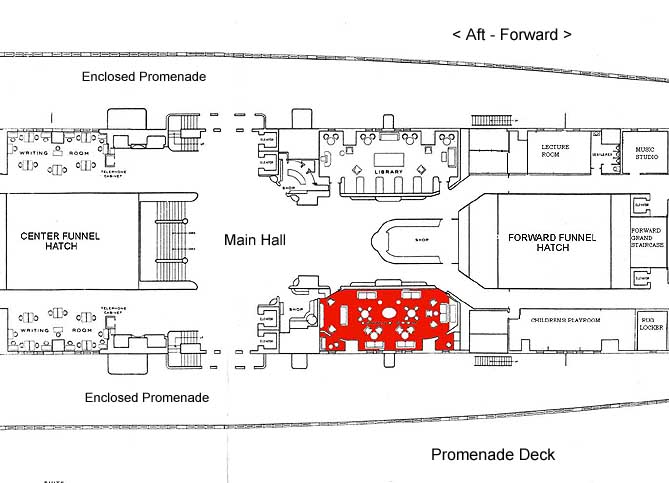
Location of drawing room on Promenade Deck
The first class drawing room was designed as a ladies' retreat on promenade deck. It may also have been a non smoking lounge since photographs from both the 1930's and 1960's show no ash trays on its tables. The room also served as a Roman Catholic chapel. A favorite of Sir Winston Churchill, the prime minister held at least one news conference here while aboard the Queen Mary.

"An atmosphere of quiet and refined dignity pervades this charming apartment. The dimensions of the room are 43 ft. long by 20 ft. wide by 12 ft. 6 in. high, and there is a centre bay of four windows, each 8 ft. high, with about two windows about half this height at either side.
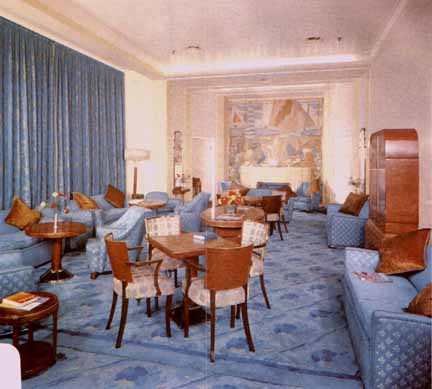
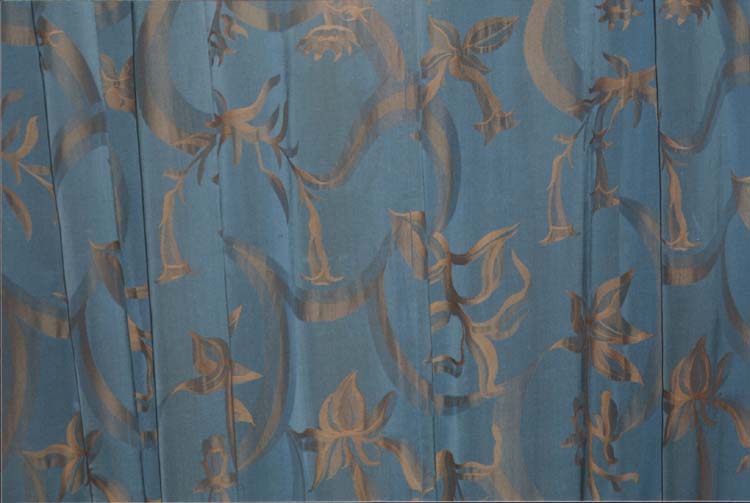
At the after end of this room there is a striking masterpiece in onyx d'or, with a decorative painting of a flower market by Mr. Kenneth Shoesmith, R.O.I. The hearth is carried out in Napoleon marble.
At the forward end is an altar, with a small sacristy and robing room for vestments adjoining. A beautiful altar-piece painting of the Madonna has been executed on a gold-leaf background by Mr. Shoesmith, who has been responsible for the painting of a harbor scene over the hinged screens enclosing the altar.
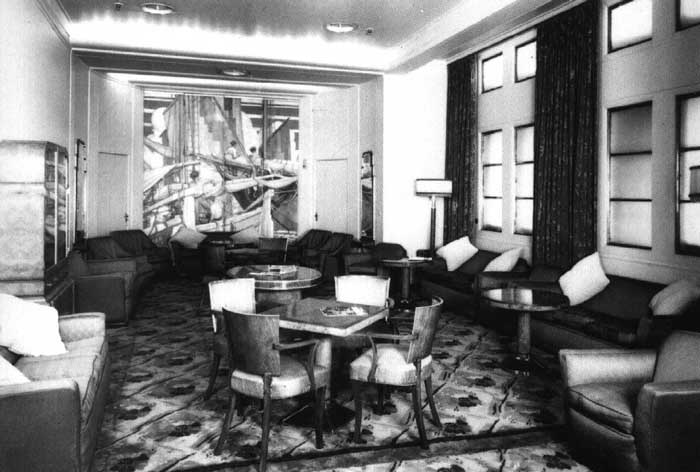
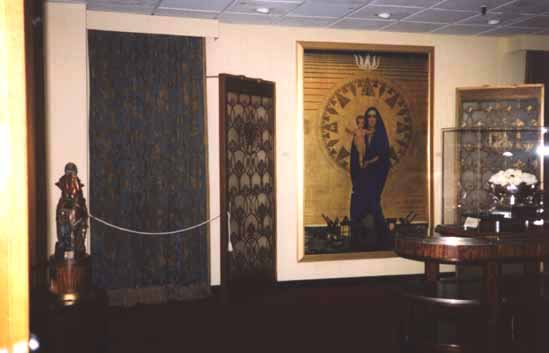
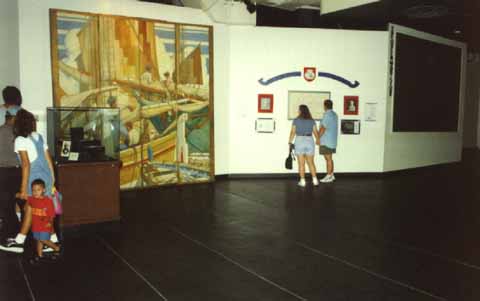
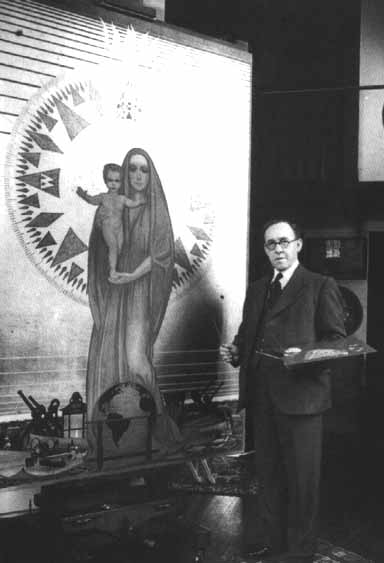
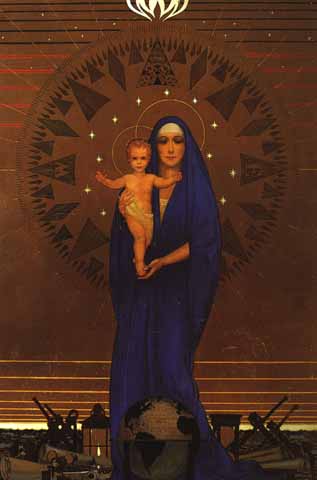
The walls and ceiling have a gloss enamel finish in shades of very pale grey. The lighting is indirect, the fittings being concealed in the ceilings and walls.
The furniture is in amboyna and rosewood. The tables have square pedestals veneered and cross branded in these woods, and they are fitted with tops of Formica [a new and fashionable material in 1936] , held in place by means of metal bands. A handsome cabinet, the upper part enriched with a unique Chinese-lacquer decoration in gold and silver, is one of the features of this apartment. [Oddly, this cabinet, a photograph of which exists in the archives, was removed before the maiden voyage. A tall wooden cabinet of a simpler design took its place.]
The upholstered furniture, consisting of easy chairs, tub chairs, and occasional chairs, is upholstered in blue tapestry; while the curtains are of blue and gold damask. The floor is covered with specially designed heavy-grade Wilton rugs in subdued shades of blue relieved with gold, with a single-tone Wilton carpet surround.
The scheme has been carried out by Messrs. Hampton, under the direction of the interior architects."
1936 - 1939 - The drawing room served the purposes described above in this period.
1940 - 1947 - During World War II the ship was converted as a troop carrier. The drawing room served as a sick bay.
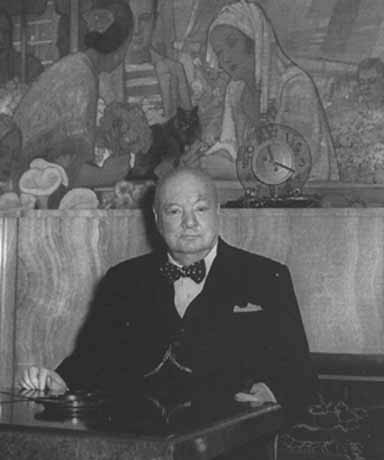
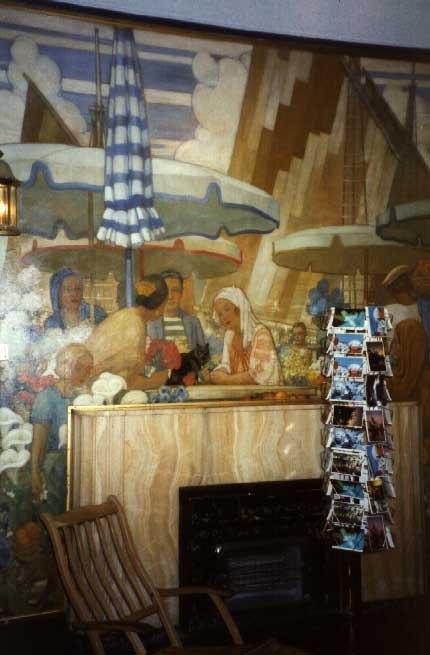
1947 - 1967 - In the postwar refit of the Queen Mary, this room was restored to her pre-war decor. Over the years the chairs were reupholstered. But when the Queen Mary sailed into Long Beach Harbor on December 9, 1967, the original furniture, drapes and carpets were still in place in this room.
1968 - present - While no drastic architectural changes have been made to this room, the cumulative effects of smaller changes made to convert it to a shop has been a cheapening of the overall decor and atmosphere in a rather peculiar way.
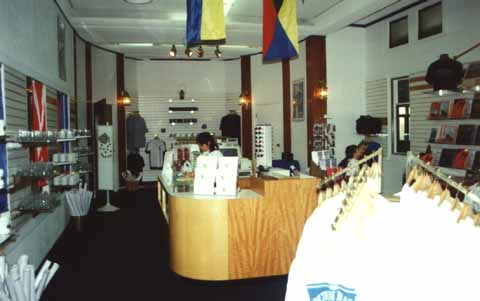
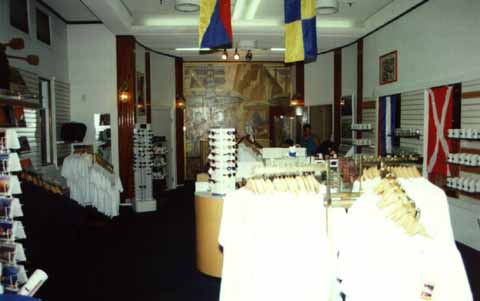
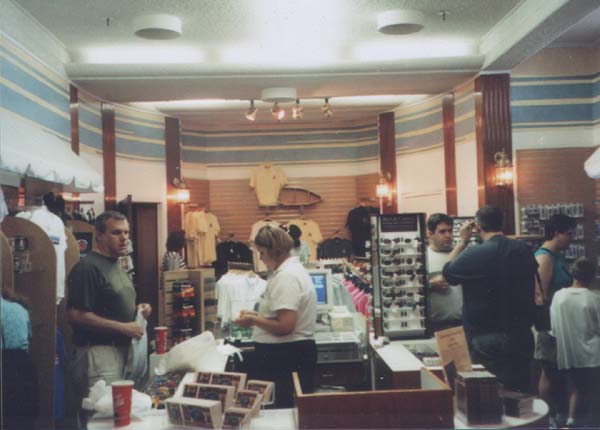
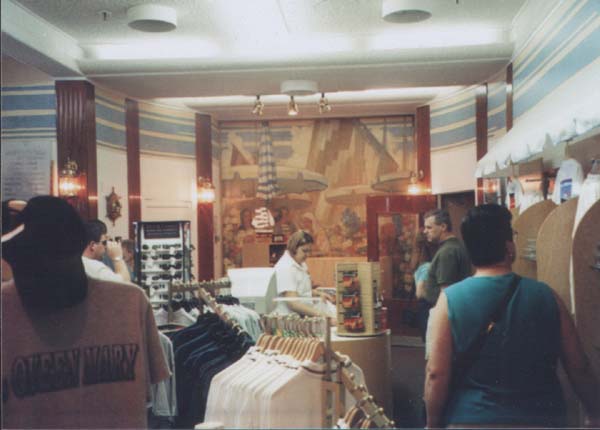
The sculpted ceiling that was originally painted in
multiple shades of gray enamel is now a white rough plaster generally used in budget renovations.
The once subtle indirect lighting scheme is overpowered with industrial white
fluorescent lighting.
The heavy Wilton carpets are gone, replaced with commercial carpeting.
All of the original furniture has been removed as have the drapes, the folding screen, the altar, and painting of the Madonna of the
North Atlantic. (Several of these elements can be viewed elsewhere on the ship.)
Stocked with tee shirts, key fobs, refrigerator magnets, miniature models of the ship and at times a selection of books about the Queen Mary, this is
the RMS Foundations' primary tourist shop on the ship.
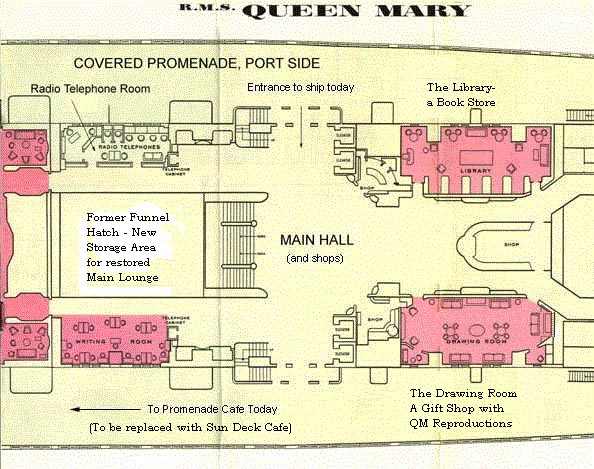
The use of this room as a shop makes sense because of its location. But the merchandise sold here and the unimaginative presentation underscores the lack of a solid retail plan for the entire ship.
Imagine for a moment the room restored with some of its original furniture in place serving as a showcase for reproductions of art and artifacts of the Queen Mary and other great liners.
One of the three tables might hold a display of reproductions of Queen Mary china, silver and crystal. The other two might hold the same artifacts from the Normandie and the Andrea Doria.
The inboard wall might display framed numbered reprints of the full color photographs taken by Madame Yvonne in 1936 for Fortune Magazine.
The sofas might display a collection of needlepoint pillows or possibly even pillows created from the thousands of yards of 1960's drapes removed from the cabins and now in storage.
The tall wooden cabinet might display Lalique vases and artifacts or tea sets.
It is quite easy to envision a retail use for this once lovely room that respects its original decor. Even transferring the Crystal Shop currently located in the ship's library would be an improvement over the current mundane use of this room.